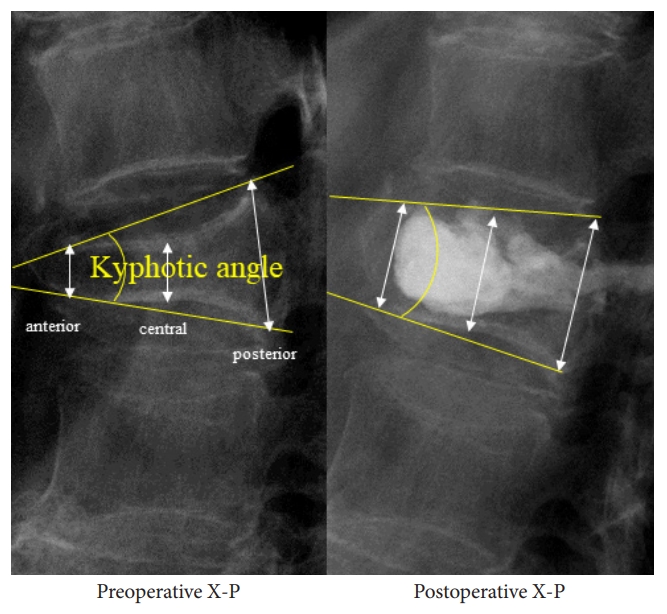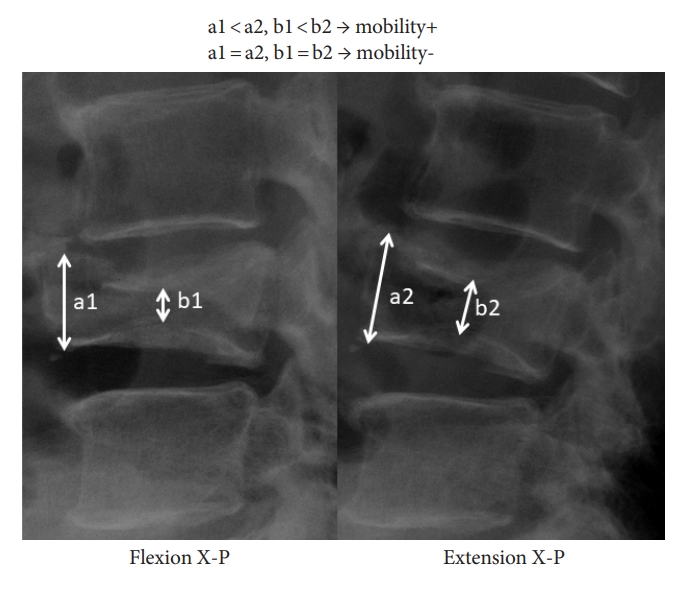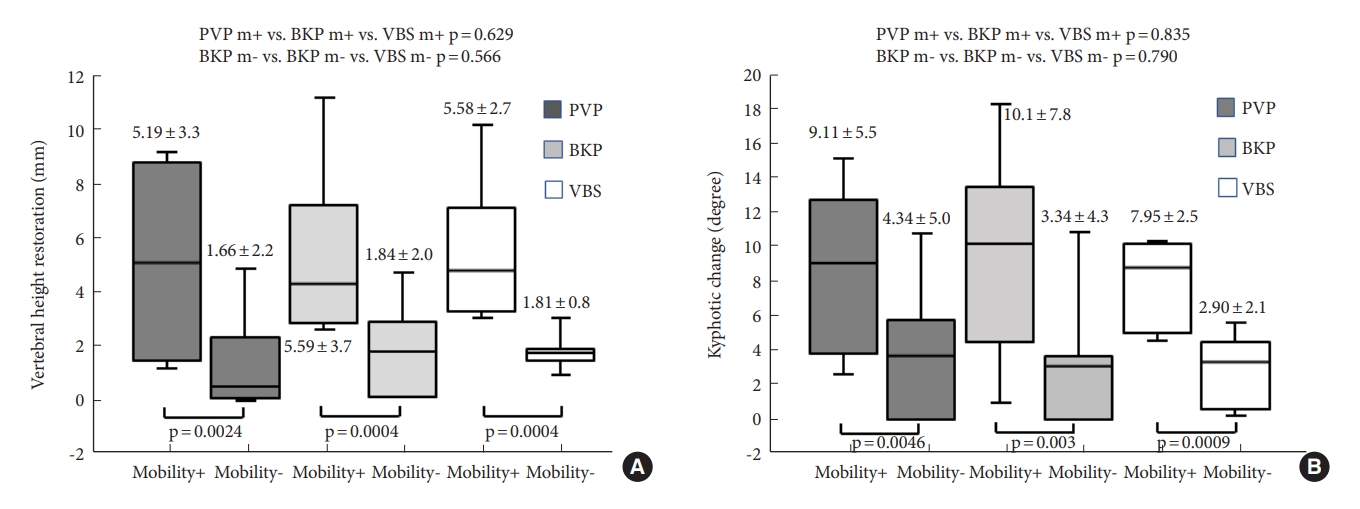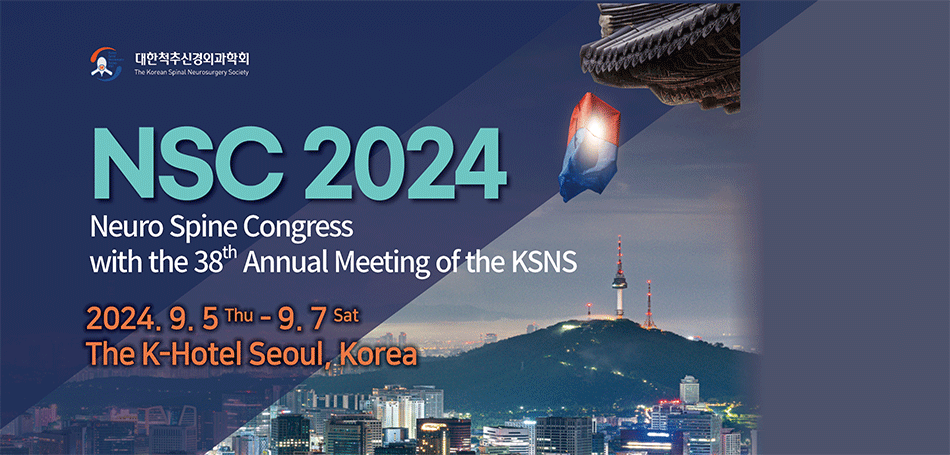- Search
|
|
||
Abstract
Objective
Whether the use of a balloon or stent in vertebroplasty for vertebral fractures, such as balloon kyphoplasty (BKP) or vertebral body stenting (VBS), actually contributes to the restoration of postoperative vertebral height is unclear. The aim of the current study was to compare the effectiveness of percutaneous vertebroplasty (PVP), BKP, and VBS in the correction of collapsed vertebrae in patients with painful vertebral fractures.
Methods
The cases studied involved 34 vertebrae in 28 patients treated with PVP, 43 vertebrae in 38 patients treated with BKP, and 20 vertebrae in 20 patients treated with VBS at Izinkai Takeda General Hospital. Changes in the vertebral height and local kyphosis angle were measured based on standing lumbar radiographs before and after surgery and were compared among the treatment groups.
Results
There were no differences in changes in the height of the anterior wall, middle body, or posterior wall of the treated vertebrae among the 3 treatment groups. The same was true for changes in the local kyphosis angle. The effectiveness of vertebral height restoration depended heavily upon preoperative vertebral instability in all the treatment groups. Correction loss due to balloon deflation effect or balloon sinking was noted with VBS or BKP.
Vertebroplasty for osteoporotic vertebral fractures, whether in the form of percutaneous vertebroplasty (PVP) [1-5]. balloon kyphoplasty (BKP) [3-7], or vertebral body stenting (VBS) [8-14], is an excellent treatment that is minimally invasive and that is highly effective at immediate relief of pain. PVP is the most classic vertebroplasty procedure [1-5], while BKP and VBS were developed for surgical safety and vertebral height restoration [3-14]. According to the literature, all treatments are equally effective at providing pain relief, but whether the balloon used in BKP, or the stent used in VBS is effective at correcting the collapsed vertebrae is unclear [3-14]. The aim of the current study was to compare the 3 treatments in terms of the effectiveness of vertebral height restoration after vertebroplasty for osteoporotic vertebral fractures.
Subjects were 86 patients who underwent vertebroplasty at Izinkai Takeda General Hospital between January 2008 and May 2022. All of the patients had received conservative treatment for 3 weeks or longer that failed to relieve pain, so they subsequently underwent surgery. Broken down by procedure, PVP was performed on 34 vertebrae in 28 patients, BKP was performed on 43 vertebrae in 38 patients, and VBS was performed on 20 vertebrae in 20 patients. PVP was performed from January 2008 to December 2010, BKP was performed from January 2011 to May 2021, and VBS was performed from June 2021 to May 2022. All patients underwent plain dynamic radiography of the lumbar spine, computed tomography (CT) of the lumbar spine, and magnetic resonance imaging of the lumbar spine before and after surgery. The height of the fractured vertebra was evaluated on standing radiographs. Postoperative imaging was performed within 7 days. The height of the fractured vertebra was measured at the anterior wall, middle body, and posterior wall, and the wedge angle was also measured (Fig. 1). Preoperative and postoperative changes in the vertebral height and wedge angle were compared among the 3 treatment groups. Next, the patients were classified based on the presence or absence of preoperative vertebral instability, and the relationship between changes in the vertebral height and changes in the kyphosis angle was evaluated. The instability of the fractured vertebrae was evaluated based on preoperative dynamic radiographic images. As shown in Fig. 2, patients in whom the vertebral height changed in images of anteroposterior flexion were deemed to be positive for instability. The frequency of postoperative bone cement leakage from the vertebral body on postoperative CT scans was analyzed and compared between the 3 treatment groups. The presence of cement leakage into the adjacent intervertebral disk, veins, paravertebral soft tissue, or epidural spaces was defined as any contrast detected beyond the cortical margin of the vertebral body on the postoperative CT scans.
Statistical analysis was performed with the software Stat View 5.0. The Mann-Whitney U-test and Fisher exact test were performed, and a p-value < 0.05 was considered to indicate a significant difference. For comparison of demographic characteristics, vertebral height restorations, and other factors between the 3 groups, we applied the Kruskal-Wallis test.
Surgery was performed with the patient in the patient under local anesthesia and in the prone position. Under C-arm guidance, a 13G biopsy needle was inserted via a unilateral transpedicular route into the anterior third of the vertebral body. Contrast medium was injected through the needle, the position of the tip of the needle and the efflux pattern of the contrast medium were checked. A polymethylmethacrylate mixture was then injected into the vertebral body. When the injected polymethylmethacrylate (PMMA) mixture contacted some part of cortical margin of the vertebral body, the surgery was completed by withdrawing the needle. During the PMMA injection, fluoroscopic monitoring was conducted in both planes with a C-arm unit.
Surgery was performed with the patient in the prone position under general anesthesia. All surgeries were performed with the patient under general anesthesia and placed in the prone position. In all cases, BKP was performed through the transpedicular route on both sides by placement of working cannulas bilaterally by using standard kyphoplasty equipment. In the vertebral body, the balloons on each side were inflated to create a space for injection of the bone cement, and then the balloons were deflated and removed. The PMMA mixture was also injected into the vertebral body from both sides. When the bone cement contacted some part of cortical margin of the vertebral body, the surgery was completed by withdrawing the needles. During the bone cement injection, fluoroscopic monitoring was conducted in both planes with a C-arm unit.
Surgery was performed with the patient in the prone position under general anesthesia. All surgeries were performed with the patient under general anesthesia and placed in the prone position. In all cases, VBS was performed through the transpedicular route on both sides by placement of working cannulas bilaterally by using standard VBS equipment. In the vertebral body, the balloons on each side were inflated to create a space for a balloon-expandable metal stent mounted on a balloon-catheter which can be implanted and expanded inside the vertebral body. When the balloons were deflated and removed, the PMMA mixture was also injected into the vertebral body from both sides. When the bone cement contacted some part of cortical margin of the vertebral body, the surgery was completed by withdrawing the needles. During the bone cement injection, fluoroscopic monitoring was conducted in both planes with a C-arm unit.
Preoperative demographic data for the 3 treatment groups are shown in Table 1. There were no significant differences in age, sex, the location of the treated vertebrae, preoperative visual analogue scale (VAS) score, the duration of pain, or preoperative vertebral height among the treatment groups (p > 0.05). The postoperative results are shown in Table 2. The change in the height of the anterior wall was 3.6 ± 3.5 mm in the group undergoing BKP and 3.7 ± 2.7 mm in the group undergoing VBS versus 3.6 ± 3.4 mm in the group undergoing PVP (p = 0.89). The change in the height of the middle body was 2.0 ± 2.2 mm in the group undergoing BKP and 2.2 ± 2.6 mm in the group undergoing VBS versus 2.5 ± 2.3 mm in the group undergoing PVP (p = 0.29). The change in the height of the posterior wall 0.5 ± 0.8 mm in the group undergoing BKP and 0.8 ± 1.6 mm in the group undergoing VBS versus 0.9 ± 1.7 mm in the group undergoing PVP (p = 0.62). There were no significant differences in the height of each site among the treatment groups. The change in the local kyphosis angle was 7.0° ± 5.7° in the group undergoing PVP, 6.9° ± 7.0° in the group undergoing BKP, and 5.4° ± 3.4° in the group undergoing VBS (p = 0.51). Similarly, there were no significant differences in the local kyphosis angle among the treatment groups. Next, patients were classified based on the presence or absence of vertebral instability, and changes in the height of the anterior wall and the local kyphosis angle were compared among the treatment groups and between the group with vertebral instability and the group without vertebral instability (Fig. 3A, B). Changes in the vertebral height and local kyphosis angle were significantly better in patients with instability in both treatment groups (change in vertebral height: p = 0.0024 for PVP, p = 0.0004 for BKP, and p = 0.0004 for VBS; change in the local kyphosis angle: p = 0.0046 for PVP, p = 0.003 for BKP, and p = 0.0009 for VBS). On the other hand, comparison of the vertebral height restoration in the anterior portion of the vertebral body in the patients with vertebral instability and those without vertebral instability between the 3 treatment groups revealed no significant differences (with vertebral mobility: p = 0.63, without vertebral mobility: p = 0.57). Comparison of the kyphotic changes in the patients with vertebral instability and those without vertebral instability between the 3 treatment groups also revealed no significant differences (with vertebral mobility: p = 0.86, without vertebral mobility: p = 0.79). As in the preoperative period, there were no differences in the postoperative VAS scores between 3 treatment groups (p = 0.91). The amount of bone cement injected did not differ significantly among the 3 treatment groups (p = 0.58). Bone cement leaked outside 16 vertebrae (47%) in the group undergoing PVP and 9 vertebrae (21%) in the group undergoing BKP; it leaked in 4 patients (20%) in the group undergoing VBS. Leakage of bone cement decreased significantly in the groups undergoing BKP or VBS (p = 0.02).
The current authors have long believed that the effectiveness of vertebral height restoration by vertebroplasty is closely associated with the presence of vertebral instability [15-20]. In vertebral fractures with instability, a cavity in the fractured vertebra is enlarged by the supine position during surgery, so bone cement is injected to fill the cavity and act as an anchor, resulting in better restoration of the vertebral height after injection [15,16]. In cases of vertebral fractures without instability, however, the injected bone cement diffuses through the gaps in the cancellous bone, limiting enlargement of the vertebral height [15,16]. Therefore, the effectiveness of vertebral height restoration after vertebroplasty is heavily influenced by preoperative vertebral instability. When comparing different treatments in terms of the effectiveness of vertebral height restoration, the element of preoperative vertebral instability must be taken into account in the patients being studied. However, most of the previous studies did not mention preoperative vertebral instability in the patients being studied. The results of this study indicated that, overall, there were no differences between BKP and VBS and PVP in the effectiveness of vertebral height restoration. Like with PVP, the effectiveness with which BKP and VBS restored vertebral height postoperatively depended heavily on preoperative vertebral instability. Even when patients were divided into those with or without vertebral instability, there were no differences in the effectiveness of vertebral height restoration among the 3 treatment groups. The lack of differences among the 3 treatment groups was presumably due to sinking of metal stent or balloon deflation effect within the vertebral body. The balloon, which had expanded within the fractured vertebral body during surgery, tended to be buried within the cancellous bone, limiting the effectiveness with which balloon expansion increased vertebral height (Fig. 4). When stent balloon used, the balloon inside the stent was expanded within the vertebral body and then deflated, but the expanded stent then shrank, resulting in loss of vertebral height correction (Fig. 5). These results suggest that there is not as much of an advantage to using a balloon or stent, in terms of vertebral height restoration, as one would expect. VBS was developed to solve the problem of balloon deflation effect in BKP, but its effectiveness was not evident in the change in vertebral height. In the current study, however, bone cement leakage out of the vertebral body decreased significantly in conjunction with VBS or BKP compared to that with PVP. This is presumably because the stent or balloon is expanded to form a cavity, allowing the safe injection of high-viscosity bone cement. The unexpected dispersion of bone cement is likely to occur during PVP but less likely to occur with VBS or BKP. What can be expected from VBS or BKP is safe treatment rather than effective vertebral height restoration. That said, the distribution of bone cement clearly differs between BKP and VBS, in which bone cement is injected into the cavity formed by a balloon or stent, and PVP, in which bone cement is injected directly into the fractured vertebral body. Thus, further verification is needed to determine whether they have similar effectiveness or not.
The present study has several limitations. First, it included only a small number of patients, and the patients were not randomized into the 3 treatment groups; rather the patients were assigned to the procedures depending on the time of enrollment. Thus, despite the lack of randomization, minimal bias might be expected from the assignment of the patients to the procedures. Moreover, because surgery was performed for all patients by the same surgeon at the same institution, there is a good reason to believe that the 3 groups were comparable. Next, the present study was a retrospective study, and vertebral mobility, vertebral heights, and kyphotic angles were not measured and analyzed in a blinded manner. However, the measurements obtained in the present study were consistent with those in previous reports; thus, we consider that there was no problem related to this limitation.
This study examined the effectiveness of vertebral height restoration in 3 groups of patients with painful vertebral fractures treated with PVP, BKP, or VBS. The effectiveness of vertebral height restoration did not differ between groups undergoing BKP or VBS and a group undergoing PVP. All the treatments improved the vertebral height postoperatively when the fractured vertebrae were unstable preoperatively. The use of a balloon or metal stent itself contributes little to the correction of collapsed vertebrae. BKP and VBS have an advantage in terms of safety by preventing the excessive dispersion of bone cement.
NOTES
Fig. 1.
The change in the local kyphosis angle was defined as the difference between the postoperative and preoperative kyphosis angle. The vertebral height was measured at the anterior wall, middle body, and posterior wall of the fractured vertebrae, and vertebral height restoration was defined as the difference between the preoperative and postoperative vertebral height. X-P, lateral dynamic radiographs.

Fig. 2.
Preoperative lateral radiographs from a patient with a vertebral compression fracture with vertebral mobility. The collapsed vertebra exhibited dynamic mobility. X-P, lateral dynamic radiographs.

Fig. 3.
(A) Postoperative restoration of the height of the anterior wall. (B) Postoperative change in the kyphosis angle in a treated vertebral compression fracture. PVP, percutaneous vertebroplasty; BKP, balloon kyphoplasty; VBS, vertebral body stenting.

Fig. 4.
Representative images demonstrated the subsidence of the metal stent in a vertebral compression fracture without vertebral mobility treated with vertebral body stenting. X-P, lateral dynamic radiographs.

Fig. 5.
Representative lateral radiographs from patients treated with vertebral body stenting indicated that the metal stent shrank and the vertebral height decreased after stent balloon deflation.

Table 1.
Baseline characteristics of patients treated for vertebral compression fractures
Table 2.
Postoperative data of patients treated for vertebral compression fractures
REFERENCES
1. Klazen CA, Lohle PN, de Vries J, et al. Vertebroplasty versus conservative treatment in acute osteoporotic vertebral compression fractures (Vertos II): an open-label randomised trial. Lancet 2010;376:1085-92.


2. Ma XL, Xing D, Ma JX, et al. Balloon kyphoplasty versus percutaneous vertebroplasty in treating osteoporotic vertebral compression fracture: grading the evidence through a systematic review and meta-analysis. Eur Spine J 2012;21:1844-59.




3. Medical Advisory Secretariat. Percutaneous vertebroplasty for treatment of painful osteoporotic vertebral compression fractures: an evidence-based analysis. Ont Health Technol Assess Ser 2010;10:1-45.
4. Wang H, Sribastav SS, Ye F, et al. Comparison of percutaneous vertebroplasty and balloon kyphoplasty for the treatment of single level vertebral compression fractures: a metaanalysis of the literature. Pain Physician 2015;18:209-22.

5. Karlsson MK, Hasserius R, Gerdhem P, et al. Vertebroplasty and kyphoplasty: new treatment strategies for fractures in the osteoporotic spine. Acta Orthop 2005;76:620-7.

6. Bae IS, Moon BG, Kang HI, et al. Difference in the Cobb angle between standing and supine position as a prognostic factor after vertebral augmentation in osteoporotic vertebral compression fractures. Neurospine 2022;19:357-66.




7. Galivanche AR, Toombs C, Adrados M, et al. Cement augmentation of vertebral compression fractures may be safely considered in the very elderly. Neurospine 2021;18:226-33.




8. Thaler M, Lechner R, Nogler M, et al. Surgical procedure and initial radiographic results of a new augmentation technique for vertebral compression fractures. Eur Spine J 2013;22:1608-16.




9. Rotter R, Martin H, Fuerderer S, et al. Vertebral body stenting: a new method for vertebral augmentation versus kyphoplasty. Eur Spine J 2010;19:916-23.



10. Wang D, Zheng S, Liu A, et al. The role of minimally invasive vertebral body stent on reduction of the deflation effect after kyphoplasty: a biomechanical study. Spine (Phila Pa 1976) 2018;43:E341-7.

11. Martín-López JE, Pavón-Gómez MJ, Romero-Tabares A, et al. Stentoplasty effectiveness and safety for the treatment of osteoporotic vertebral fractures: a systematic review. Orthop Traumatol Surg Res 2015;101:627-32.


12. Disch AC, Schmoelz W. Cement augmentation in a thoracolumbar fracture model: reduction and stability after balloon kyphoplasty versus vertebral body stenting. Spine (Phila Pa 1976) 2014;39:E1147-53.

13. Diel P, Röder C, Perler G, et al. Radiographic and safety details of vertebral body stenting: results from a multicenter chart review. BMC Musculoskelet Disord 2013;14:233.




14. Werner CM, Osterhoff G, Schlickeiser J, et al. Vertebral body stenting versus kyphoplasty for the treatment of osteoporotic vertebral compression fractures: a randomized trial. J Bone Joint Surg Am 2013;95:577-84.

15. Chen YJ, Chen HY, Tsai PP, et al. Significance of dynamic mobility in restoring vertebral body height in vertebroplasty. AJNR Am J Neuroradiol 2012;33:57-60.



16. McKiernan F, Jensen R, Faciszewski T. The dynamic mobility of vertebral compression fractures. J Bone Miner Res 2003;18:24-9.


17. Sun G, Jin P, Li M, et al. Height restoration and wedge angle correction effects of percutaneous vertebroplasty: association with intraosseous clefts. Eur Radiol 2011;21:2597-603.



18. Teng MM, Wei CJ, Wei LC, et al. Kyphosis correction and height restoration effects of percutaneous vertebroplasty. AJNR Am J Neuroradiol 2003;24:1893-900.



- TOOLS































